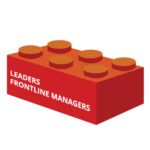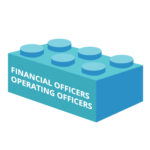This post was updated on 11/11/2020.
High potential executives aren’t just born, they’re made.
Successful business leaders spend as much time developing their professional selves as they do mentoring others. As a perk or incentive, businesses often invest in personality tests for high-potential leaders. Myers-Briggs, StrengthsFinder, and Enneagram are some of the most widely known assessments.
We first published about The Success Insights Wheel®, or color wheel, personality test in 2009, and the blog post still receives thousands of views each year. The color wheel was designed by Target Training International to measure how users react to challenges, people, rules, and environment. Our emotional intelligence coach, Jeannie Murphy, likes using the color wheel because she says her clients find it simpler to understand, recall, and apply.
“Your color is helpful because it is not fixed. It changes as you mature, but it can also change by choice. Therein lies the power of the wheel. Like a chameleon, you can choose to behave differently.”
– Jeannie Murphy
Not only can executives successfully adapt their own behavior, but they can also use the wheel to intuit what colors their colleagues and clients might be.
Murphy explains the wheel’s four primary personality styles:
Red: Dominant and intense, reds bring new ideas to the table and may be quick to implement concepts that are not fully formed. Focused more on tasks than people, reds engage in high-energy, spirited debates and will hear you best if you are clear, specific, and brief. Ask questions to help them think through the details and define their big picture ideas.

Sales leaders and front-line managers are often red.
Yellow: Personable and trusting, the yellow is the engaging visionary on your team — but don’t expect them to handle the details. Easy to spot, yellows smile a lot and speak with their hands. Be warm and friendly with your yellows, but make sure you follow up with specifics in writing.

Yellow personalities frequently fill CEO and Chief Marketing Officer roles.
Green: Intensely loyal and patient, greens are steady workers and terrific friends, but make sure you ask what they think. They will not burden you with their own opinions or emotions. Maximize their contributions by creating an environment where they feel safe and valued so you can hear their insightful feedback. To communicate with greens, be gentle, friendly, and curious.

Green personalities gravitate toward positions like Chief Human Resources Officer or customer experience — places where they can put their nurturing tendencies to work.
Blue: Detail oriented, critical, and careful, blues ask hard questions to ensure the job is done right. They may tend toward perfectionism and can be socially withdrawn, but their work is high quality. To communicate with your blues, organize your thoughts in advance and stick to business.

Blue personalities are typically found in finance, operations, and logistics — jobs where the details count: Chief Financial Officers, Chief Operating Officers, or Presidents, and also in compliance roles.
Murphy shared, “When you recognize the ‘color’ of the person you are managing or working with, you can approach them in a manner that is effective and productive. Temporarily shift your style so it meshes well with theirs.”
Let’s say you’re a “yellow.” You paint in broad strokes, and your talent lies in sketching the big picture. When you interact with “blues,” who are more detail oriented, you can come to the conversation prepared to drill down on the details that form the foundation of your strategic vision. It takes a rainbow to make a company successful. If you’re a yellow, you need blues, and the blues need you.
Whether you use the color wheel or any other assessment, self-awareness and reflection are hallmarks of a leader — in the boardroom, and in life. Successful executives acknowledge they are just one part of the team, and each team member approaches the same challenges with a different, and valuable, perspective. Investments in professional development, coaching, mentorship, and more are investments in an enterprise’s future.
Are you making it easy for people to see your strengths? Your social media presence is an important way to showcase your unique combination of experience, skills, and personality. An optimized LinkedIn profile communicates your value and serves as a gateway for more opportunities. We can give you a profile that tells your story effectively. Check out our profile writing services.
Think you know your color? Here’s an overview of the color wheel.

